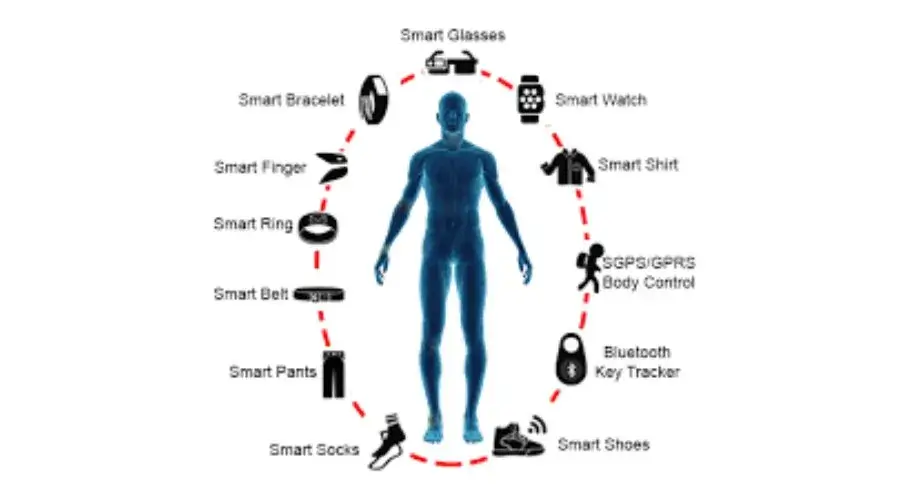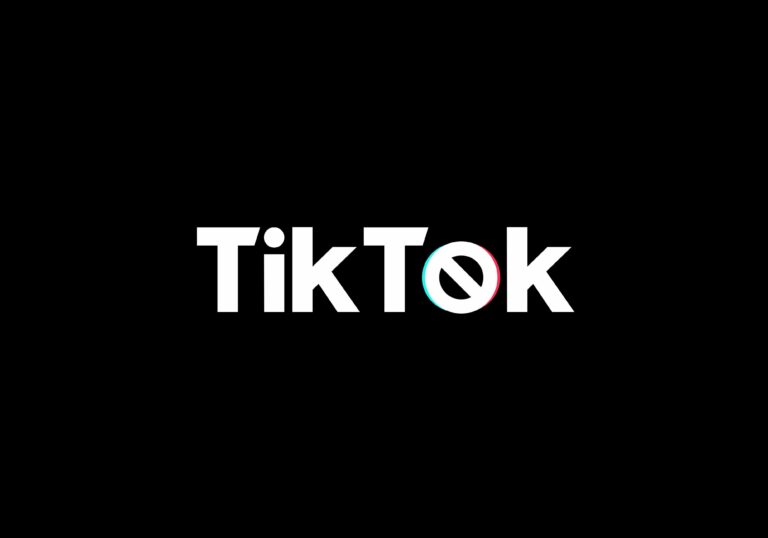Wearable technology refers to a category of electronic devices that can be worn on the body. It seamlessly integrates with daily life to enhance convenience, health, and connectivity. So, these innovative gadgets, including smartwatches, fitness trackers, and smart glasses, are designed to track health metrics and facilitate communication.
Moreover, provides interactive experiences. Moreover, with the help of sensors and connectivity, wearable technology not only offers practical functionality. But also opens new avenues for personal and professional applications. Thus wearable technology is making it an increasingly integral part of the modern lifestyle.
Types Of Wearable Technology
Here we give you all the best types of wearable technology to check and get benefits from them. Therefore, all kinds of information and types are given here below.

- Fitness Trackers
Fitness trackers are popular wearables. They monitor physical activities like steps taken, calories burned, and heart rate. These devices help users stay active and healthy by providing detailed fitness data.
- Smartwatches
Smartwatches are advanced versions of fitness trackers. They not only track health but also connect to smartphones. Users can receive notifications, make calls, and use apps directly from their wrists. Smartwatches combine the functions of a watch, phone, and fitness tracker.
- Smart Clothing
Smart clothing integrates technology into the fabric. This can include sensors that track heart rate, body temperature, or muscle activity. Athletes and fitness enthusiasts use smart clothing to optimize their training and performance.
- Wearable Medical Devices
These devices are designed for health monitoring. Examples include glucose monitors for diabetics and heart monitors for cardiac patients. They provide real-time health data and can alert users to potential issues, improving overall healthcare.
- Augmented Reality Glasses
Augmented reality (AR) glasses overlay digital information onto the real world. These wearables are used in various fields, from gaming to professional training. They offer an immersive experience by blending digital content with the user’s environment.
Key Components Of Wearable Technology
Wearable technology helps to give multiple components for additional information. So, you can use this system and check all major components of the wearable technology.
- Sensors and Actuators
Sensors are crucial for wearables. They collect data from the user’s body and surroundings. Common sensors include accelerometers, which measure movement, and heart rate monitors. Actuators provide feedback to the user, like vibrations for notifications.
- Connectivity and Networking
Wearables rely on connectivity to function effectively. They use technologies like Bluetooth, WiFi, and cellular networks to communicate with other devices and the internet. This connectivity enables real-time data sharing and updates.
- Power Sources And Battery Life
Battery life is a key consideration for wearables. Most devices use rechargeable batteries, but frequent charging can be inconvenient. Innovations like solar charging and energy-efficient components aim to extend battery life.
- Data Processing and Storage
Wearables generate a lot of data. They need powerful processors and sufficient storage to handle this information. Many devices also use cloud storage to manage data more effectively, ensuring that users can access their information anytime, anywhere.
Benefits Of Wearable Technology
- Health And Fitness Monitoring
Wearables empower users to track their health and fitness. They provide real-time feedback and personalized insights, helping users achieve their wellness goals. These devices encourage a proactive approach to health management.
- Enhanced Lifestyle And Convenience
Wearables offer conveniences beyond health monitoring. They enable contactless payments, navigation, and smart home control. By integrating seamlessly into daily life, wearables enhance overall productivity and convenience.
- Improved Medical Care
In healthcare, wearables are invaluable. They enable remote patient monitoring, reducing the need for frequent doctor visits. This continuous monitoring helps detect health issues early, leading to better treatment and outcomes.
- Workplace Productivity and Safety
In the workplace, wearables improve productivity and safety. For example, smart helmets provide real-time data to construction workers, reducing accidents. Wearables can also monitor worker health, ensuring a safer working environment.
Challenges And Limitations In Wearable Technology
Wearable technology faces challenges such as battery life limitations, which hinder long-term usability and user convenience. Additionally, privacy concerns arise due to the continuous data collection and the potential for misuse of personal information. The miniaturization of components necessary for comfort and aesthetic appeal often complicates the integration of advanced features and functionalities.
- Privacy Concerns
Wearables collect a lot of personal data, raising privacy issues. Users worry about who can access their information and how it is used. Ensuring data protection and privacy is crucial for the widespread acceptance of wearables.
- Data Security Issues
Security is a major concern for wearable technology. These devices can be targets for cyber-attacks, potentially compromising sensitive information. Strong encryption and regular software updates are necessary to safeguard data.
- Battery Life Constraints
Short battery life is a common issue with wearables. Frequent recharging can be inconvenient for users. Advancements in battery technology are essential to improve the user experience and functionality of wearables.
- Cost And Accessibility
High costs can limit access to advanced wearable technology. While prices are gradually decreasing, making these devices affordable for everyone is important. Accessibility ensures that more people can benefit from wearable technology.
Wearable Technology In Healthcare And Its Functions
Wearable technology in healthcare is transforming patient monitoring. So, it helps personalized medicine by providing real-time health data and early detection of medical conditions. Therefore, all major functions of wearable technology in healthcare are:
- Remote Patient Monitoring
Wearables enable continuous health monitoring outside clinical settings. This reduces hospital visits and allows for real-time tracking of patients’ conditions. Remote monitoring improves the management of chronic diseases and overall patient care.
- Chronic Disease Management
For patients with chronic conditions, wearables provide crucial data. Devices like continuous glucose monitors help manage diabetes more effectively. Wearables offer detailed insights, aiding in better disease management and control.
- Emergency Response and Alerts
Wearables can detect emergencies and send alerts. For instance, they can identify falls or cardiac events and notify emergency services or caregivers. This quick response capability can save lives and provide peace of mind for users.
- Rehabilitation and Therapy
In rehabilitation, wearables track progress and provide feedback. They help patients perform exercises correctly and stick to their rehab plans. This real-time data ensures effective recovery and improves overall therapy outcomes.
The Future Of Wearable Technology In Advanced System
The future of wearable technology promises to revolutionize how we interact with the world, blending seamlessly into our daily lives to enhance convenience, health monitoring, and connectivity. Advances in materials science, artificial intelligence, and miniaturization are paving the way for more sophisticated, comfortable, and unobtrusive devices. Major things added to it are:
- Advances In Materials And Design
The future of wearables will see innovative materials and designs. Flexible electronics and smart textiles will make devices more comfortable and functional. These advancements will enhance the user experience and broaden the applications of wearables.
- Integration With IoT and AI
Wearables will increasingly integrate with the Internet of Things (IoT) and artificial intelligence (AI). AI can offer personalized insights and predictive analytics, while IoT enables seamless interaction with other smart devices. This integration will enhance the capabilities of wearables.
- Potential Societal Impacts
Wearable technology can significantly impact society. It can improve health outcomes, increase productivity, and enhance quality of life. However, it also raises questions about dependence on technology and the digital divide.
- Ethical and Regulatory Considerations
As wearables evolve, ethical and regulatory issues must be addressed. This includes data privacy, informed consent, and ensuring equitable access. Developing responsible frameworks is essential for the sustainable growth of wearable technology.
Popular Wearable Technology Brands And Their Use In Industry
Brands like Apple, Fitbit, Garmin, and Samsung are at the forefront, continually pushing the boundaries of what wearables can achieve in terms of functionality, design, and integration with other technology.
- Apple
Apple is a leader in the wearable market with its Apple Watch. Known for its sleek design and robust ecosystem, the Apple Watch offers a wide range of features, from health tracking to smart connectivity.
- Fitbit
Fitbit, now part of Google, focuses on health and fitness. Its devices are known for accurate tracking and user-friendly features. Fitbit fosters a community of health-conscious users, making fitness a social experience.
- Garmin
Garmin specializes in GPS technology and wearables for fitness and outdoor activities. Their devices are durable and offer advanced tracking features, making them popular among athletes and adventurers.
- Samsung
Samsung offers a variety of wearables, including smartwatches and fitness bands. Known for their cutting-edge technology and stylish designs, Samsung wearables provide robust functionality and seamless integration with other devices.
Conclusion
Wearable technology includes a wide range of devices designed to be worn on the body, offering various functionalities from health monitoring to enhanced connectivity. Despite challenges such as battery life and privacy concerns, the advancements in this field continue to drive its integration into everyday life, particularly in healthcare. As technology progresses, wearable devices are expected to become even more sophisticated, unobtrusive, and essential to our daily routines.
Frequently Asked Questions
What Is Wearable Technology?
A: Wearable technology refers to electronic devices that are worn on the body, often incorporating sensors and software to track various activities and health metrics.
What Are Some Examples Of Wearable Technology?
Examples include smartwatches, fitness trackers, smart glasses, and wearable medical devices like ECG monitors and insulin pumps.
How Does Wearable Technology Benefit Users?
Wearable technology benefits users by providing real-time data and feedback on health and fitness, improving productivity, enhancing communication, and offering convenience through hands-free operation.
What Are Some Common Challenges With Wearable Technology?
Common challenges include limited battery life, privacy concerns regarding data collection, and the need for miniaturized components that balance functionality with comfort and aesthetics.
How Is Wearable Technology Used In Healthcare?
In healthcare, wearable technology is used for continuous health monitoring, early detection of medical conditions, patient management, and personalized treatment plans based on real-time data.
Which Brands Are Leading In Wearable Technology?
Leading brands in wearable technology include Apple, Fitbit, Garmin, Samsung, and Huawei, known for their innovative and user-friendly devices.






